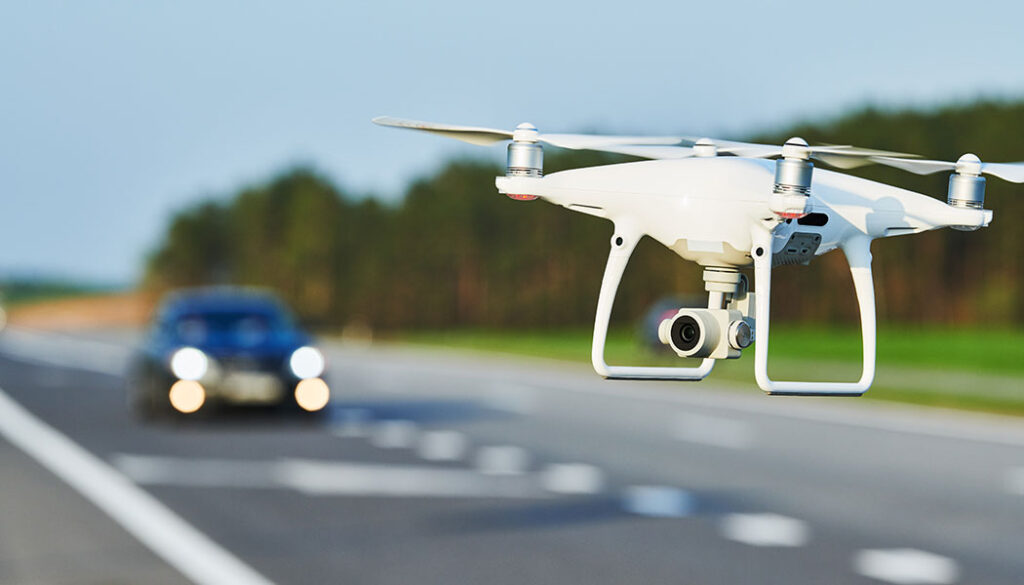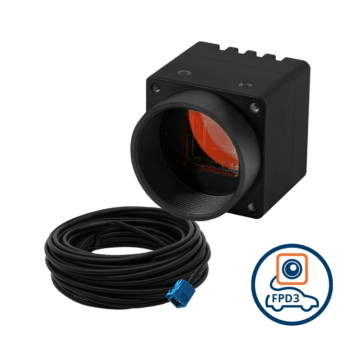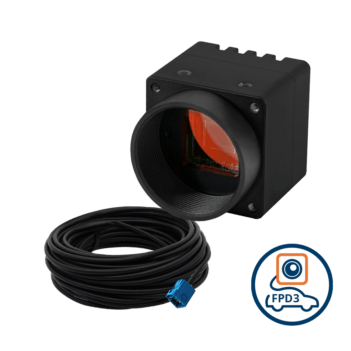Maintaining the quality of roads and bridges is critical to ensuring public safety. Government authorities and engineering companies have resorted to manual inspection of roads and bridges in the past. However, with thousands of kilometers of roads and bridges, this proved to be inefficient. This also led to increased labor and equipment costs and does not permit full coverage within the given amount of time.
Therefore, there is a massive need for better solutions which can automate the process of road and bridge inspection. Camera-enabled Road inspection devices offer a good solution. These devices use a combination of single and multi-camera systems to detect cracks, potholes, and corrosion in real-time, and the video footage archived for careful analysis, and comparison.
In this blog post, we explore how embedded cameras are becoming a part of this innovative solution and helping road and government authorities enhance public safety through automated and remote inspection.
Why is it required to automate road and bridge inspections?
The road and bridge network across the globe is very extensive, and attempting to inspect all of them manually is not practical. At the same time, inspecting them on a regular basis is critical to ensuring public safety.
According to Statista, in 2020, the highway network in the United States had a total length of around 4.17 million statute miles (6.7 million kilometers). Statista also says that in 2022, there were nearly 25,810 road bridges in the US. Europe also has a great road infrastructure with the length of the motorway network in the 27 European Union member states (EU-27) amounting to some 74,900 kilometers in 2021.
In addition, human inspection comes with the following challenges:
- It requires multiple staff to work together in tandem. Traditional methods such as coring take hours to complete even for a small stretch of road.
- It is a tedious process involving the use and transport of multiple pieces of equipment.
- Manual inspection is difficult to perform during temperature extremes such as in the middle of the summer or winter seasons.
Automating road and bridge inspection offers a solution to many of these challenges.
Automated road and bridge inspection using camera-enabled devices
Road inspection can be done with the help of cameras in two ways:
- Using a device mounted on a truck or car.
- Using drones
Truck-mounted Road inspection solution
This solution involves mounting a camera system on a truck, bus, or car in a way that the camera has a 360-degree view of its surroundings. The device is projected outward at the top as shown in the image below:
As the vehicle moves, the camera captures the video of the surrounding roads and bridges. This data is then transmitted to a host system onboard the vehicle through a USB or SerDes interface (FPD-Link III for example).

Some road inspection systems also use a depth camera such as LiDAR to create a 3D map of the surrounding structures. 3D cameras help to implement photogrammetric procedures to create a point cloud for a deeper understanding of the state of roads and bridges. This data can also be used for better town and road planning.
How does the analysis of the video data happen?
The first method is to do it manually. Either an operator on the vehicle does it as the cameras capture the video or the data is sent to a remote location for analysis by dedicated personnel. The second method involves applying AI (artificial intelligence) and ML (machine learning) algorithms to analyze the video footage to identify cracks, fissures, and potholes.
The embedded camera system is often used in combination with a Ground Penetration Radar (GPR) and a thermal camera to understand conditions such as air infiltration, decay of materials, and changes in elasticity.
Using drones for automated road inspections
Drones use a combination of RGB and IR cameras to capture images and videos of road infrastructure. Compared to using a truck-mounted solution, drones offer the following advantages:
- A comprehensive aerial view of the area.
- Reach areas of bridges that cannot be accessed otherwise, such as the bottom or truss.
- Enhanced focus on areas of interest.
- Image and video capture distance versatility – particularly useful for taking close range images and videos.
Like trucks, drones use 4 to 5 cameras to ensure that they can capture all the necessary details covering the entire surroundings.

Things to keep in mind while using multi-cameras for road inspection
As mentioned earlier, road inspection requires the use of multiple camera modules since a 360-degree view is required. This can be achieved with 4 to 5 embedded cameras, but will also depend on the following factors:
- Field of view (FOV) of individual camera modules: The number of cameras must be decided in a way that when the cameras are used in combination, FOV between 70 and 90 degrees are usually chosen to create a 360-degree view.
- Lens distortions: One of the challenges in using lenses with large FOV values is that it might result in lens distortions.
- Multi-camera synchronization: A hardware-based synchronization method is recommended. However, software-based synchronization will also work since real-time decisions need not be made using the video data captured.
Apart from these, you also need to consider some factors while selecting a single camera system such as:
- Resolution: The higher the resolution, the better the details. A resolution of 5 to 8MP is sufficient for road and bridge inspections.
- High dynamic range: Since road inspection is carried out under bright sunlight, having a camera with a high dynamic range (ideally over 130 dB) is necessary.
- Chroma: Certain conditions (especially those of bridges) are assessed by measuring color variations.
- Zoom: A zoom of at least 4X is recommended in road inspection cameras for ease of observation on areas of interest.
- Frame rate: A frame rate of more than 30 fps is recommended to eliminate motion blur as trucks and drones move fast.
- IP-rated enclosure: Road inspection cameras are used in outside environments. Hence, IP-rated enclosures are good to have. For example, TechNexion’s SerDes camera solutions come with IP68-rated enclosures that ensure protection from dust and water.
Learn more about multi-camera solutions here: Multi-Camera Systems in Embedded Vision: Features and Applications.

FPD-Link III Aluminium Enclosed Camera with onsemi AR0821 8MP 4K Rolling Shutter with Onboard ISP + IR-Cut Filter with C Mount Body
VLS-FPD3-AR0821-CB
- onsemi AR0821 8MP Rolling Shutter Sensor
- 4K HDR Imaging Capabilities
- Designed for Low Light Applications
- C-Mount for Interchangeable Lenses
- FAKRA Z-Code Automotive Connector
- Plug & Play with Linux OS & Yocto
- VizionViewer™ configuration utility
- VizionSDK for custom development
Benefits of camera-enabled road inspection
Using 2D and 3D camera systems in conjunction with other technologies such as GPR provides users with adequate data to assess the conditions of road infrastructure, thereby offering the ability to identify corrective actions to fix defects in a timely manner. Here are the other advantages of automated road inspection:
- Reduction in the number of staff required for conducting inspections.
- Ability to cover at least 10 times the area manual inspection can cover each time.
- Long term reduction in TCO (Total Cost of Ownership) (despite the upfront capital investment.)
- The need to hand carry equipment.
- The useful data obtained for future reference. (City planning, road decay analysis, material analysis, and understanding the impact of the weather, etc.)
The future of automated road inspection using cameras
Road and bridge inspection using cameras is still in its infancy phase. Though many city authorities have been experimenting with the idea, it is yet to see mainstream adoption. This is set to change in the future. As more and more city planners and road authorities realize the benefits, the innovation is expected to spread to different parts of the world.
Today, the analysis of the video data captured during road and bridge inspection is done completely manually. The future will see the data captured done automatically by application of AI and ML algorithms. Specialized companies are coming up in this field that are developing models to better analyze the conditions of road and bridge infrastructure.
A factor likely to define the future of road and bridge inspection using cameras is its integration with other smart traffic technologies. Resources can be pooled to achieve multiple tasks using the same vehicles. Smart cars and smart buses can be used as a one-stop solution for traffic enforcement, passenger safety, and road inspection. with careful planning and resource allocation.
TechNexion – camera modules for all types of infrastructure applications
Whether it’s for smart cars, drones, smart buses, smart poles, or trucks for road inspection, TechNexion got you covered. Our wide portfolio of cameras includes solutions with features such as high dynamic range, multi-camera synchronization, high frame rate, wide field of view, etc. We also extensively support our customers throughout the camera integration journey to ensure that they get the best possible output using our vision solutions. Learn more about our embedded vision solutions here.
Related Products

FPD-Link III Aluminium Enclosed Camera with onsemi AR0234 2MP Full-HD Global Shutter with Onboard ISP + IR-Cut Filter with C Mount Body
VLS-FPD3-AR0234-CB
- onsemi AR0234 2.3MP Global Shutter Sensor
- C-Mount for Interchangeable Lenses
- FAKRA Z-Code Automotive Connector
- Plug & Play with Linux OS & Yocto
- VizionViewer™ configuration utility
- VizionSDK for custom development

FPD-Link III Aluminium Enclosed Camera with onsemi AR0521 5MP Rolling Shutter with Onboard ISP + IR-Cut Filter with C Mount Body
VLS-FPD3-AR0521-CB
- onsemi AR0521 5MP Rolling Shutter Sensor
- Designed for Low Light Applications
- C-Mount for Interchangeable Lenses
- FAKRA Z-Code Automotive Connector
- Plug & Play with Linux OS & Yocto
- VizionViewer™ configuration utility
- VizionSDK for custom development

FPD-Link III Aluminium Enclosed Camera with onsemi AR0821 8MP 4K Rolling Shutter with Onboard ISP + IR-Cut Filter with C Mount Body
VLS-FPD3-AR0821-CB
- onsemi AR0821 8MP Rolling Shutter Sensor
- 4K HDR Imaging Capabilities
- Designed for Low Light Applications
- C-Mount for Interchangeable Lenses
- FAKRA Z-Code Automotive Connector
- Plug & Play with Linux OS & Yocto
- VizionViewer™ configuration utility
- VizionSDK for custom development
- Why is it required to automate road and bridge inspections?
- Automated road and bridge inspection using camera-enabled devices
- Things to keep in mind while using multi-cameras for road inspection
- Benefits of camera-enabled road inspection
- The future of automated road inspection using cameras
- TechNexion â camera modules for all types of infrastructure applications
- Related Products
